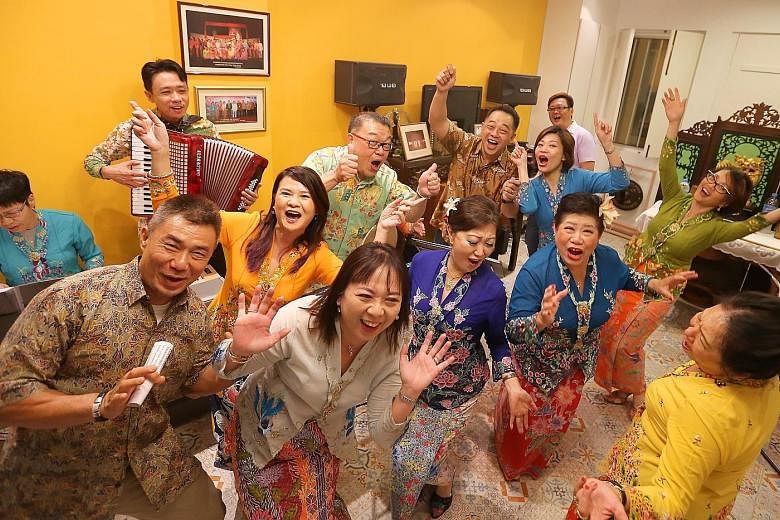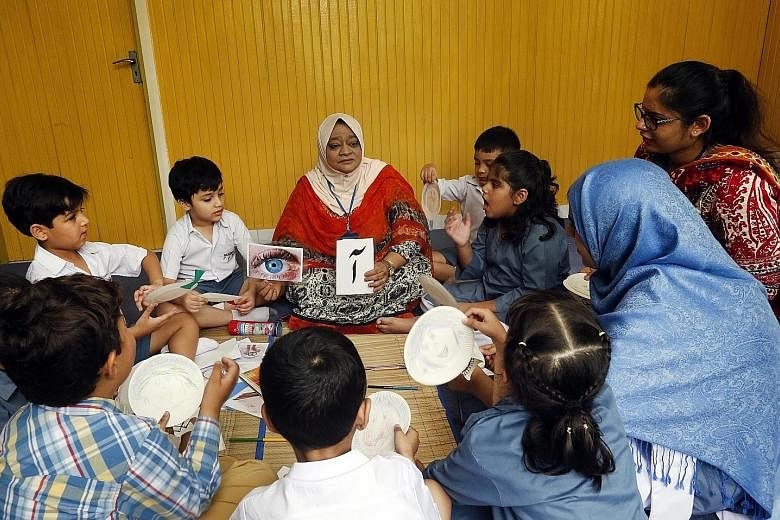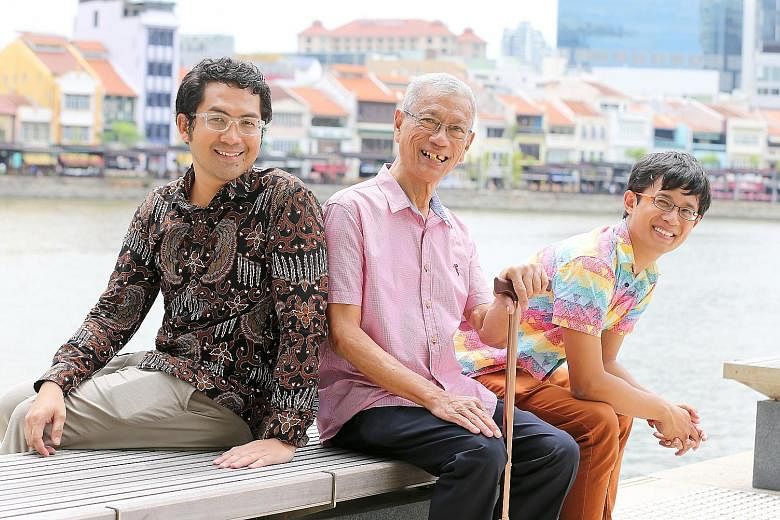Singapore has four official languages - Chinese, Malay, Tamil and English - but dozens more, each rich in history and culture, are used by its various communities.
Since January, The Straits Times has spotlighted these varied tongues, from Bugis to Yiddish and Hakka, tracking how they have evolved in use as part of the weekly Singapore Talking series.
For instance, the Char Yong (Dabu) Association's Ke Yun Tuan is working hard to bring Hakka back to life in song.
The group has close to 20 members whose ages range from 30 to 70. The songs they belt out hark back to a time when their ancestors sang on mountain tops. The traditional Hakka tunes also used to be sung at the mouth of the Singapore River in the early 1960s to keep people entertained.
Language enthusiasts and experts said the series has been valuable and helpful in raising awareness in the community about the existence of the different languages.
Among them is Dr Ritu Jain, a lecturer at Nanyang Technological University's (NTU) Language and Communication Centre.
Dr Jain celebrates the linguistic diversity in Singapore, saying: "While it was necessary to focus on mainstream languages in the task of nation-building, in post-independent Singapore, the country has matured to a level where it can comfortably acknowledge and even promote non-mainstream languages."
She cited how student enrolment has risen for the study of non-Tamil Indian languages like Bengali, Gujarati, Hindi, Punjabi and Urdu - from a total of 6,057 students in 2011 to 9,082 today, according to the Board for the Teaching and Testing of South Asian Languages.
Experts said there needs to be a focus on the long-term survival of these minority languages.
NTU linguistics and multilingual studies programme lecturer Francesco Perono Cacciafoco said the survival of a minority language depends on two factors - the existence of both young and old speakers of the tongue, and whether there are linguists studying and documenting that language.
"Without speakers, the language dies. Without linguists documenting it, the language, if still alive, is confined within the speakers' communities. The two forces should always join."
Dr Jain agreed, citing community-led initiatives of the Indian language communities in the past as well as the more recent effort of reviving Kristang - the heritage language of the Portuguese-Eurasian community. From holding a Kristang Language Festival at the Asian Civilisations Museum in May, to producing a Kristang online dictionary and a board game, the community has put in considerable effort to keep the dying language alive.
Dr Jain said such efforts should serve as a positive and successful example to other communities.
The Kristang revivalists, led by National University of Singapore linguistics undergraduate Kevin Martens Wong, also put together a Languages Of Singapore Trail as part of the festival. They spotlighted more than a dozen tongues such as Banjarese, Boyanese, Gujarati and Maquista.
Dr Jain said: "These create a lot of language gains for community languages. Speakers get a sense of pride that their languages are being recognised and celebrated."
Mr Wong believes that the way forward revolves around developing and nurturing communities of speakers who work closely at the grassroots level to keep the languages alive.
Referencing his experience with Kristang, Mr Wong said: "Strong bonds are being developed among young learners and older speakers of Kristang as they learn together.
"If these kinds of relationships continue to grow and start to sprout for some of the other languages, the future will start to look a little brighter."
He said general public awareness about the existence of these languages is also key.
Dr Jain believes courses offered by NTU also help to bridge the gap. For instance, its Centre for Modern Languages offers courses in non-mainstream languages such as Latin, Spanish, Hindi and Arabic.
Meanwhile, the university's Linguistics and Multilingual Studies programme works to safeguard and document endangered and undocumented East and South-east Asian languages.
Dr Cacciafoco said: "We try to reconstruct diachronically the languages of minority people. We document them, we write their grammars, we record their legends and stories, and we help the spread of literacy among young people."
Clans, associations, religious institutions and other groups have also been doing their part to keep these tongues alive in Singapore.
For instance, the Gunong Sayang Association, a Peranakan cultural group, has staged productions in the Peranakan language almost every year since 1984.
Similarly, the Sam Kiang Huay Kwan has been running Shanghainese dialect classes.
In the case of the Ghouse household, which The Straits Times featured in February, it was a strict rule in their home to speak only Urdu, the national language and lingua franca of Pakistan.
Associate professor Francesco Cavallaro, director of NTU's Centre for Modern Languages, said: "Languages are closely linked to people's identities. Singapore is well known in the world for its multilingual and multicultural people.
"Multilingualism is at the core of what Singapore is as a country and what Singaporeans are. The Singaporean identity, therefore, has been shaped by multiple languages. This is a very special situation."
The Republic is indeed a tapestry of languages, each with its own unique syntax and history.
•A new series called The Lives They Live will begin next week.



